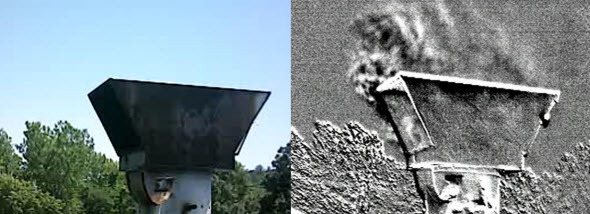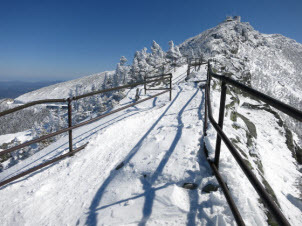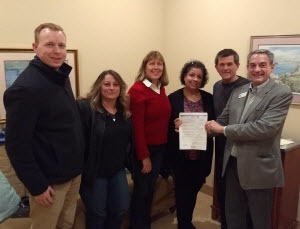Air Mail: News About NY Air Quality - January
The New York State Department of Environmental Conservation sent this bulletin on 01/24/2018 01:15 PM EST |
| DEC Delivers - Information to keep you connected and informed from the NYS Department of Environmental Conservation |
| Share or view as a web page || Update preferences or unsubscribe |
|
|
This Week’s Topics:
Cool Tools Help DEC Illuminate Air PollutionWhat’s in the air? Most people are amazed to find out what is in the air they breathe every day. From tiny particles of dust to chemicals, it can all be breathed in by people, wildlife and pets. Most of the time, invisible pollutants go unnoticed and do no harm at low levels. But, sometimes pollution control devices at facilities malfunction and cause pollution leaks that can go undetected by human eyes. Air Resources staff use an optical gas imaging camera to shed some light on previously invisible air pollution. This video camera allows our staff to see reflected infrared radiation from certain air contaminants. They can use the camera to identify leaks or malfunctioning equipment at air pollution sources, and record real-time pictures and videos to document any issues. The optical gas imaging camera is a valuable tool because it allows identification of pollutants being emitted that would otherwise be invisible to the human eye. Ultimately, the camera helps us to evaluate a facility to find and fix any problems quickly, which helps to keep our air clean.
It's Not Just the Rain, It's Also the SnowYou have probably heard about acid rain, but did you know there is such a thing as acid snow? Both acid rain and snow are water mixed with air pollution. In the case of acid snow, some of this pollution is released into streams and lakes when the mountain snowpack melts, causing a springtime spike in acid levels. The acidic water harms plants and animals, especially in the Adirondack Park.
Thank you to the ASRC Whiteface Mountain Field Station for this beautiful shot of the Whiteface Mountain summit. People Helping People: Air Resources Staff Give It Up
Air Resources staff wish all a healthy and safe New Year.
Stay Informed about Your Air QualityNew York’s traditional ozone season runs from May through September. DEC still publishes daily ground-level ozone and particulate matter pollution forecasts year-round using a scale called the Air Quality Index (AQI). DEC sends an air quality alert when there is a high AQI value, which indicates polluted air. Individuals with pre-existing respiratory and cardiovascular conditions or individuals who exercise outdoors should take caution during an air quality alert. The AQI can be accessed in 3 ways:
We would like to know what you think. Please send your Air Mail! questions or comments to us at DAR.web@dec.ny.gov. |



 Thanks to New York’s continuous efforts since the 1970s to enact laws that reduce emissions from power plants, automobiles, and factories, the snow you see in this photo taken from the summit of Whiteface Mountain contains much less pollution today. Anything you can do to
Thanks to New York’s continuous efforts since the 1970s to enact laws that reduce emissions from power plants, automobiles, and factories, the snow you see in this photo taken from the summit of Whiteface Mountain contains much less pollution today. Anything you can do to  The staff and management in the Division of Air Resources donated $4,000 to the Albany Damien Center to assist people living with HIV/AIDS. The Division held its annual December fundraiser in remembrance of a coworker lost in a vehicle accident in 2004. A total of $21,800 has been given to nonprofits and individuals in need since 2005 – the first year of the event.
The staff and management in the Division of Air Resources donated $4,000 to the Albany Damien Center to assist people living with HIV/AIDS. The Division held its annual December fundraiser in remembrance of a coworker lost in a vehicle accident in 2004. A total of $21,800 has been given to nonprofits and individuals in need since 2005 – the first year of the event.